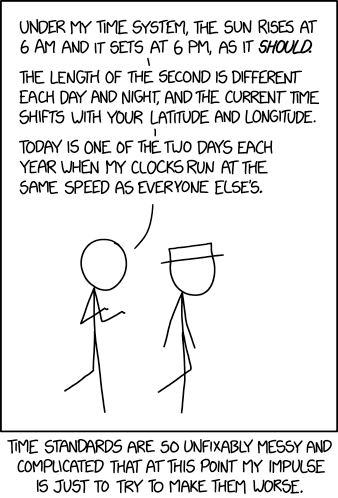Let’s just say that Munroe and I have different tastes here.
Does anyone know if Moonfall is at all inspired by the first part of Neal Stephenson’s book SevenEves?
Actually, LISA still is. We’re working on it. Mid-30-ies it should be launched, or rather they: three satellites.
Really? That’s great news. Back when I was still in the loop, the most recent news was that it was dropped completely. Researchers were still looking at it (and at missions two and three generations beyond), but NASA was completely out of the game.
It is an ESA mission, but very probably with NASA and JAXA contributions. The technology has been demonstrated (impressively beyond the requirements) with the LISA pathfinder mission. It will be a completely new window on the universe from space.
I just know that I’m disappointed that the Moonfall trailer used CCR’s Bad Moon Rising straight up, instead of leaning into the full on trailer rerecording with a creepy children’s choir.
This movie looks like such trash and I’ll be there opening weekend.
Heh. This is exactly how the traditional Jewish system works. The time between sunrise and sunset, and vice versa, is by definition 12 hours, so the length of an hour varies depending on whether it is day or night, and is never exactly what it was yesterday or will be tomorrow.
As Jewish ideas go, I think there are sound reasons why monotheism and bagels caught on with the rest of the world and this didn’t.
I don’t think that’s so much “Jewish system”, but “ancient (i.e., pre-clocks) system”. The Romans counted time that way, too.
Bloody Romans! What have they ever done for us??
As Chronos says, it’s not a specifically Jewish system, but an ancient system. It was widely used by the Egyptians, Babylonians, Greeks, Romans, etc., and later in medieval Christian Europe.
It’s the logical and easy way to tell time without a clock – you can tell the approximate time from the position of the sun in the sky. Dawn is the first hour, noon is the sixth hour. You can mentally divide up the sky, and get a rough idea of the hour.
Variable hours were in use throughout Europe until the 14th century, when mechanical clocks came into use. Early mechanical clocks, like the Wallingford clock and the Prague clock, show variable hours as well as equal hours. The dials were based on the astrolabe, which showed both.
Interesting. Would that be how sundials work?
Orthodox Jews still use this system to determine the proper time to recite prayers. Anyone know of any other examples of modern people still using this for any practical purpose?
And do we think Randall knew he was, so to speak, re-inventing the wheel with this strip?
Ancient and early medieval sundials showed variable-length hours. In late medieval times sundials showing equal-length hours started to be used – but that’s far more difficult to do. It requires a precise design and a precise orientation depending on the latitude.
Roman portable sundials are interesting. They could be adjusted for different latitudes. Often the names of different cities were marked on a rotating dial, so if you travelled from one city to another, you could change the setting so the sundial was still accurate.
And my understanding (perhaps wrong) is that this is where X “o’clock” came from. It was the time on the (mechanical) clock vs. the sun-based time that the people were more familiar with. Eventually “o’clock” became just “the time”.
He left out steps where someone has to print something out and then immediately scan it back in, or manually transcribe things from the printout. So-called “electronic banking”, at least in the US, is full of things like that.
That’s usually on the end user, where you have to print out a 15 page document so that you can initial each page and sign at the end, then scan that and send it back.
